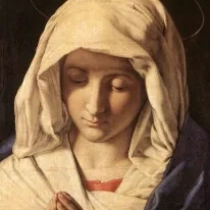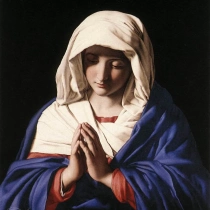 1609 - 1685
mannerism
1609 - 1685
mannerism
Description Francesco de' Rossi (see Sassoferrato)
Francesco de' Rossi, born in 1510 in Florence, Italy, emerged as a pivotal figure in the Italian Renaissance art scene. Best known by the moniker "Il Salviati," he apprenticed under the renowned artist Andrea del Sarto during his formative years. Rossi's early success led him to Rome, where he began to shape his distinctive Mannerist style.
In the tumultuous backdrop of 16th-century Italy, Rossi faced both personal and professional challenges. The Sack of Rome in 1527 disrupted the artistic community, yet Il Salviati persevered, producing notable works that showcased his penchant for innovation. His art, heavily influenced by Michelangelo and Raphael, featured elongated figures and dynamic compositions, challenging the norms of the time.
Rossi's biography is marked by a series of milestones, including commissions from influential patrons and a period of artistic exploration in Rome. Despite the political and religious upheavals, he continued to evolve his style, infusing emotion into his paintings and contributing to the dynamic narrative of Mannerist art.
The legacy of Francesco de' Rossi endures through his impact on subsequent art movements. While not as widely celebrated as some contemporaries, his willingness to push artistic boundaries and experiment with form left an indelible mark. Il Salviati's contributions to the Renaissance and Mannerist periods resonate in the transition to Baroque art, solidifying his place in the ever-evolving tapestry of art history. Today, his works are appreciated for their boldness and the role they played in shaping the trajectory of Italian Renaissance art.
Gallery
Videos
Paintings Francesco de' Rossi (see Sassoferrato)
Quotes
In art, one must dance on the edge of tradition, where innovation and emotion intertwine to breathe life into the canvas.
The canvas is my stage, and the brush, my actor. I seek not mere representation but the resonance of emotion in every stroke.
In the chaos of creation, find the beauty that transcends the ordinary, for it is there that art reveals its true power.
I paint not only with colors but with the echoes of the human soul, each stroke a melody in the grand symphony of expression.
Tradition is the foundation, but innovation is the architecture of art. To evolve, one must dare to reimagine the familiar.









Anri
23 november 2023, 12:24Francesco de' Rossi, also known as Il Salviati, was an Italian Mannerist painter of the 16th century. He was known for his elegant and dynamic compositions, as well as his use of vibrant colors. Il Salviati was associated with the artistic circle in Florence and Rome, and his works often reflected the Mannerist style with its emphasis on exaggerated poses and complex compositions.
On the other hand, Sassoferrato is the name associated with the 17th-century Italian Baroque painter Giovanni Battista Salvi. He was known for his religious paintings, particularly depictions of the Virgin Mary. Sassoferrato's works often featured a soft and delicate style, characterized by a meticulous attention to detail and a subtle use of color.
If you could clarify whether you are interested in Francesco de' Rossi or Sassoferrato, I would be happy to provide a more detailed review of the respective artist.
Anna
23 november 2023, 12:34Roman
23 november 2023, 12:26Francesco de' Rossi, commonly referred to as Il Salviati, was a prominent Italian Mannerist painter who left an indelible mark on the art scene of the 16th century. Born in Florence in 1510, Il Salviati became a key figure in the Mannerist movement, a style characterized by its sophisticated compositions and a departure from the classical norms of the Renaissance.
Il Salviati's works are known for their dynamic energy, vibrant colors, and exaggerated poses. His paintings often feature swirling figures and elaborate, theatrical scenes, reflecting the Mannerist inclination towards stylized and expressive forms. One of his notable works is the fresco cycle in the Cappella Salviati in San Marco, Florence, showcasing his mastery in creating visually captivating and emotionally charged narratives.
Beyond his artistic contributions, Il Salviati was an influential figure in the cultural circles of Florence and Rome, associating with other eminent artists of his time. His work had a lasting impact on the evolution of Italian art, serving as a bridge between the High Renaissance and the Baroque periods.
In summary, Francesco de' Rossi, or Il Salviati, stands as a noteworthy figure in the history of Italian art, contributing significantly to the Mannerist movement with his distinctive style and leaving behind a legacy that continues to be appreciated and studied today.